
How to Use SHT31: Examples, Pinouts, and Specs
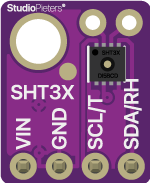
 Design with SHT31 in Cirkit Designer
Design with SHT31 in Cirkit DesignerIntroduction
The SHT31, manufactured by Sensirion, is a digital humidity and temperature sensor designed to deliver accurate and reliable environmental measurements. It combines a capacitive humidity sensor and a band-gap temperature sensor on a single chip, providing high precision and fast response times. The SHT31 communicates via an I²C interface, making it easy to integrate into a wide range of applications.
Explore Projects Built with SHT31
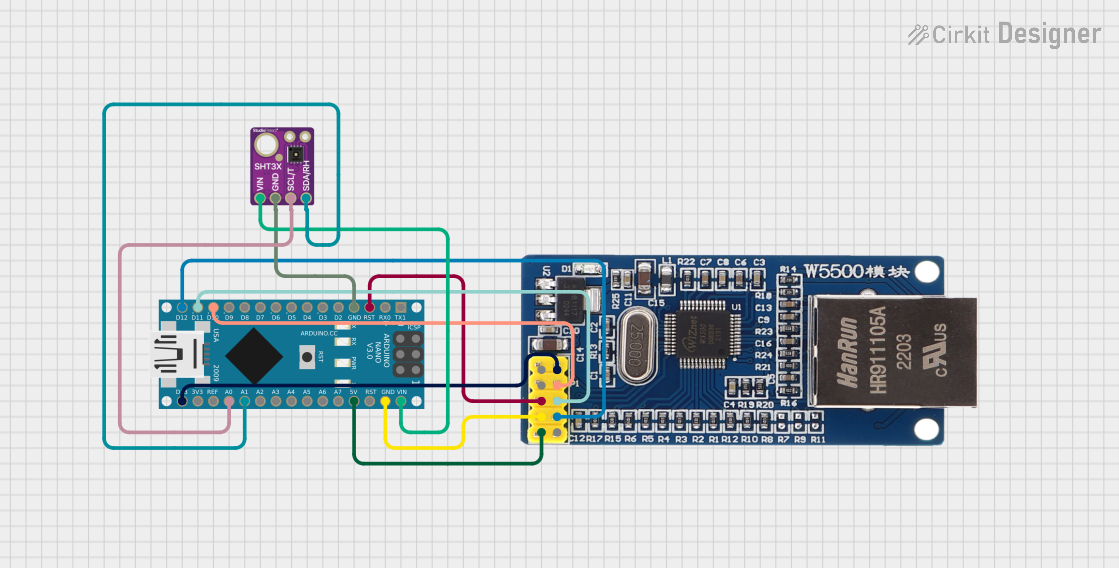
 Open Project in Cirkit Designer
Open Project in Cirkit Designer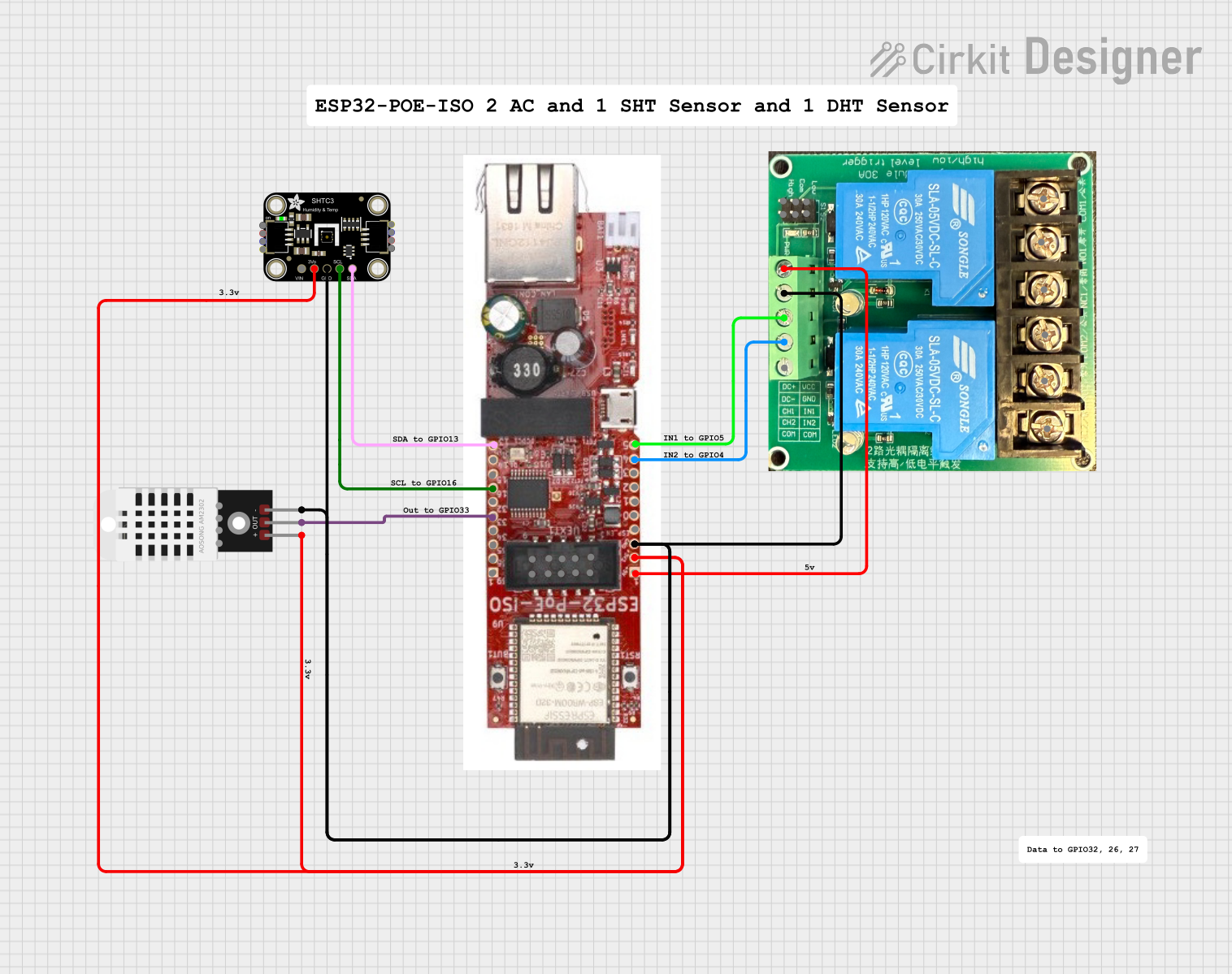
 Open Project in Cirkit Designer
Open Project in Cirkit Designer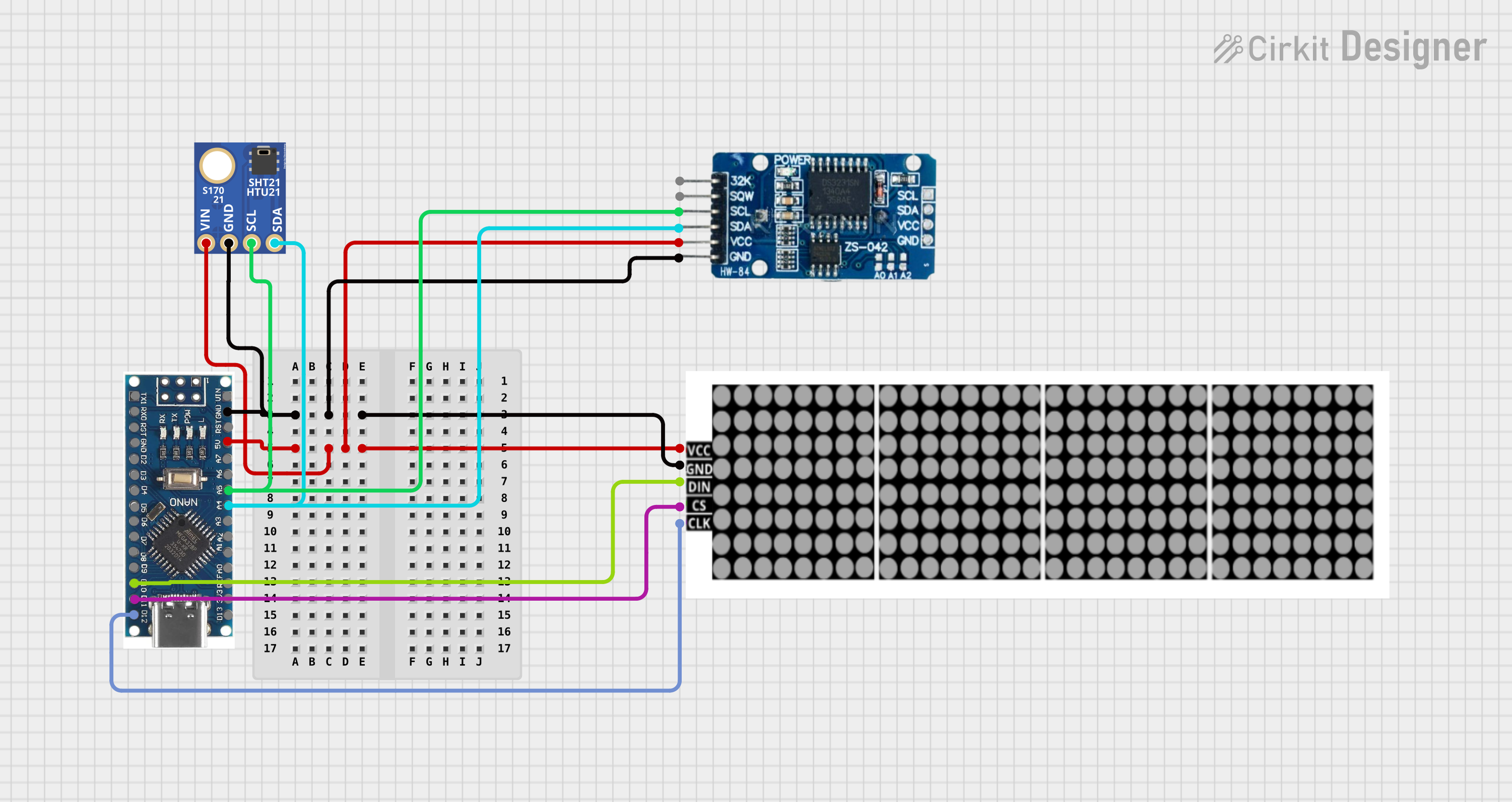
 Open Project in Cirkit Designer
Open Project in Cirkit Designer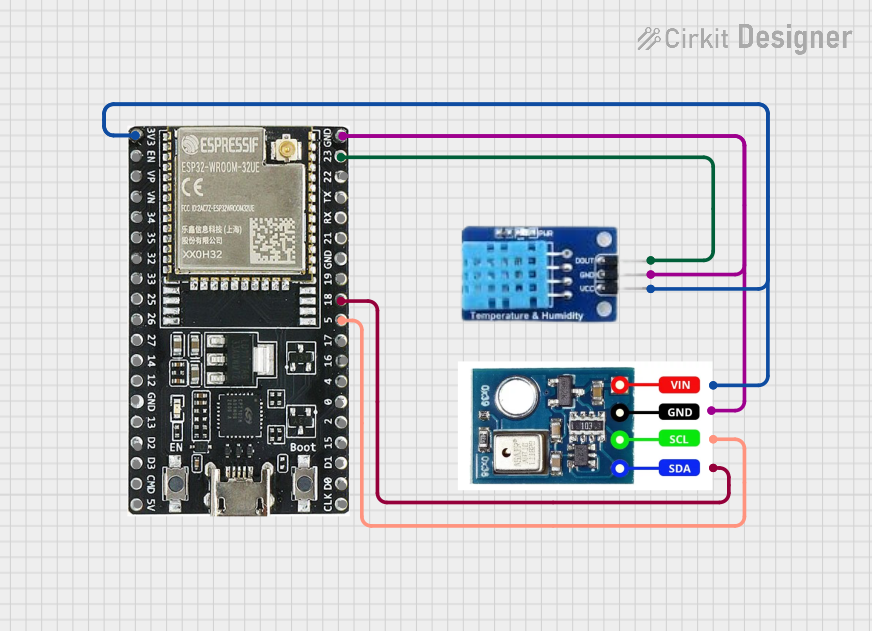
 Open Project in Cirkit Designer
Open Project in Cirkit DesignerExplore Projects Built with SHT31

 Open Project in Cirkit Designer
Open Project in Cirkit Designer
 Open Project in Cirkit Designer
Open Project in Cirkit Designer
 Open Project in Cirkit Designer
Open Project in Cirkit Designer
 Open Project in Cirkit Designer
Open Project in Cirkit DesignerCommon Applications
- HVAC (Heating, Ventilation, and Air Conditioning) systems
- Weather stations
- Environmental monitoring
- Industrial process control
- IoT (Internet of Things) devices
- Data loggers
Technical Specifications
The SHT31 sensor is designed for high performance and ease of use. Below are its key technical details:
Key Specifications
| Parameter | Value |
|---|---|
| Supply Voltage (VDD) | 2.4V to 5.5V |
| Average Current | 2 µA (at 1 measurement per second) |
| Measurement Range | Humidity: 0% to 100% RH |
| Temperature: -40°C to 125°C | |
| Accuracy (Typical) | Humidity: ±2% RH |
| Temperature: ±0.3°C | |
| Communication Interface | I²C (up to 1 MHz) |
| Response Time (τ63%) | 8 seconds (for humidity) |
| Operating Temperature | -40°C to 125°C |
| Storage Temperature | -40°C to 125°C |
| Dimensions | 2.5 mm x 2.5 mm x 0.9 mm |
Pin Configuration
The SHT31 is typically available in a 4-pin package. Below is the pinout description:
| Pin Number | Pin Name | Description |
|---|---|---|
| 1 | VDD | Power supply (2.4V to 5.5V) |
| 2 | SDA | Serial Data Line for I²C communication |
| 3 | GND | Ground |
| 4 | SCL | Serial Clock Line for I²C communication |
Usage Instructions
The SHT31 is straightforward to use in a circuit, thanks to its I²C interface. Below are the steps and considerations for integrating the sensor:
Circuit Connection
- Connect the VDD pin to a 3.3V or 5V power supply.
- Connect the GND pin to the ground of your circuit.
- Connect the SDA pin to the SDA line of your microcontroller (e.g., Arduino UNO).
- Connect the SCL pin to the SCL line of your microcontroller.
- Use pull-up resistors (typically 10 kΩ) on the SDA and SCL lines if not already present.
Important Considerations
- Ensure the supply voltage is within the specified range (2.4V to 5.5V).
- Avoid exposing the sensor to extreme conditions (e.g., condensation or high humidity for prolonged periods).
- Use proper decoupling capacitors (e.g., 0.1 µF) near the VDD pin to stabilize the power supply.
- The sensor is factory-calibrated, so no additional calibration is required.
Example Code for Arduino UNO
Below is an example of how to use the SHT31 with an Arduino UNO. This code reads temperature and humidity values and displays them on the Serial Monitor.
#include <Wire.h>
#include "Adafruit_SHT31.h"
// Create an instance of the SHT31 sensor
Adafruit_SHT31 sht31 = Adafruit_SHT31();
void setup() {
Serial.begin(9600); // Initialize Serial Monitor at 9600 baud
Wire.begin(); // Initialize I²C communication
// Initialize the SHT31 sensor
if (!sht31.begin(0x44)) { // 0x44 is the default I²C address
Serial.println("SHT31 sensor not found. Check wiring!");
while (1); // Halt execution if sensor is not found
}
Serial.println("SHT31 sensor initialized successfully.");
}
void loop() {
// Read temperature and humidity
float temperature = sht31.readTemperature();
float humidity = sht31.readHumidity();
// Check if readings are valid
if (!isnan(temperature) && !isnan(humidity)) {
Serial.print("Temperature: ");
Serial.print(temperature);
Serial.println(" °C");
Serial.print("Humidity: ");
Serial.print(humidity);
Serial.println(" %");
} else {
Serial.println("Failed to read from SHT31 sensor.");
}
delay(2000); // Wait 2 seconds before the next reading
}
Notes on the Code
- The
Adafruit_SHT31library is used in this example. Install it via the Arduino Library Manager. - The sensor's default I²C address is
0x44. If your sensor uses0x45, update thesht31.begin()call accordingly.
Troubleshooting and FAQs
Common Issues
Sensor not detected by the microcontroller:
- Verify the wiring, especially the SDA and SCL connections.
- Ensure pull-up resistors are present on the I²C lines.
- Check the I²C address (default is
0x44).
Incorrect or unstable readings:
- Ensure the sensor is not exposed to condensation or contaminants.
- Verify the power supply voltage is stable and within the specified range.
- Avoid placing the sensor near heat sources or in direct sunlight.
Library not found or compilation errors:
- Ensure the
Adafruit_SHT31library is installed correctly. - Restart the Arduino IDE after installing the library.
- Ensure the
FAQs
Q: Can the SHT31 measure both temperature and humidity simultaneously?
A: Yes, the SHT31 can measure both parameters in a single operation, and the readings are available via the I²C interface.
Q: What is the typical lifespan of the SHT31 sensor?
A: The sensor is designed for long-term use and can operate reliably for several years under normal conditions.
Q: Can I use the SHT31 with a 5V microcontroller?
A: Yes, the SHT31 supports a supply voltage range of 2.4V to 5.5V, making it compatible with both 3.3V and 5V systems.
Q: How do I protect the sensor in harsh environments?
A: Use a protective cover or filter to shield the sensor from dust, water, and other contaminants while allowing air to pass through.
By following the guidelines and best practices outlined in this documentation, you can effectively integrate the SHT31 sensor into your projects and achieve accurate environmental measurements.